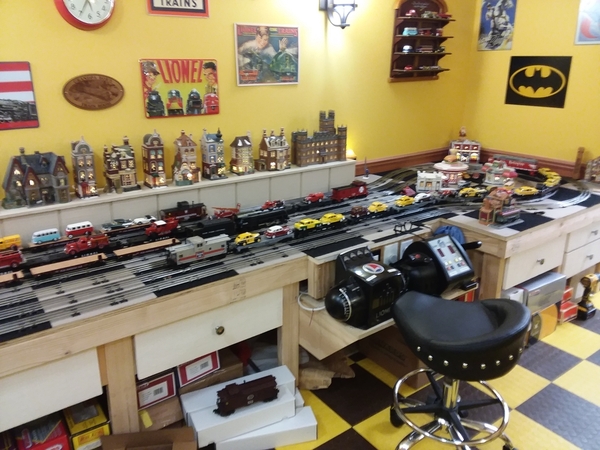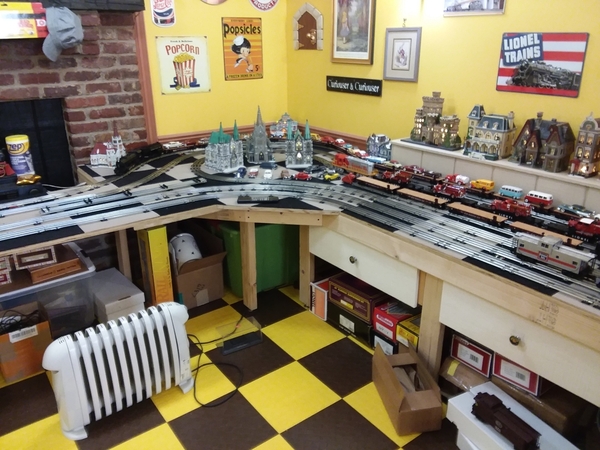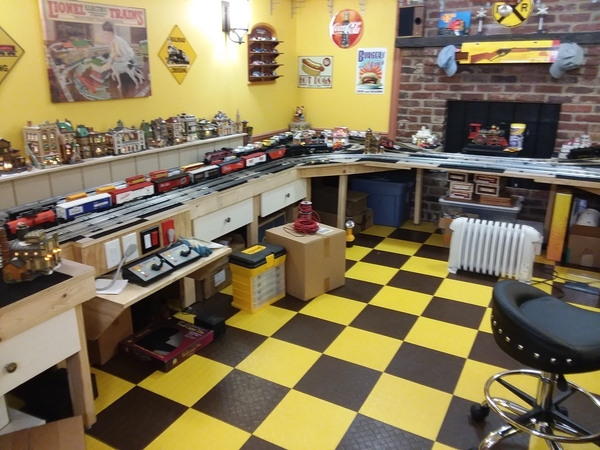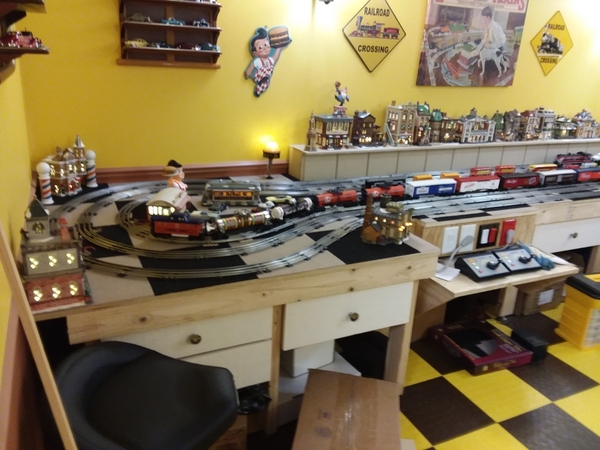When I constructed my layout, I originally had two tables, one on each side of the room. The inner circle had an O-31 turn at one end and an O-27 turn at the other. The middle circle has O-31 turns at both ends. The outer circle has O-42 turns at both ends.
So, now for the modifications. I constructed a crossover platform at one end of the tables, and reconfigured the middle track and outer track to make a tie-in to both tables. So, with that complete (track), I need to reconfigure the wiring so that all the power drops are tied into the same transformer. Prior to the crossover, I had six separate power supplies for the room. Now, I will need only four, but the wiring needs to be reconfigured. I run strictly conventional locomotives.
My goal is to hopefully be able to run two trains on the O-42, and two on the O-31. It will take some playing around with locomotives and consists to get the speeds right so one train doesn't run the other off the track.
Any ideas on my plan and how to accomplish it? I am trying not to purchase a bunch of new stuff to accomplish this task. I know I could probably do it with LionChief stuff, but I gave up on that a few years ago. I am going to try with just using conventional.













